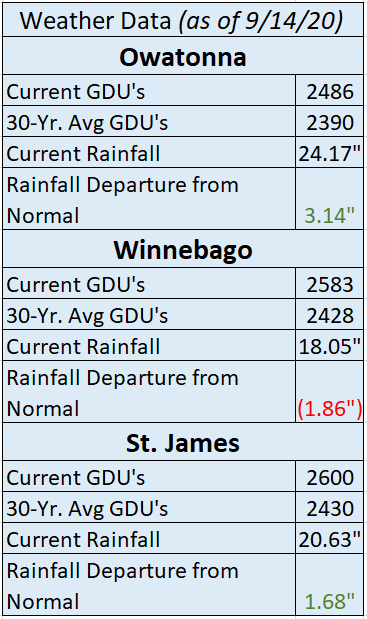2020.09.16 CFS Growing Insights
Sep 16, 2020

|
|||||||
| Corn Dry Down | |
| One of the benefits of planting early in 2020 with above-average GDU’s is that corn should be able to naturally dry down in fields in a warmer part of fall than 2019. It takes about 300 GDU’s to reduce each percentage point of grain moisture content between 30%-25%. Once grain dries past 25%, grain dries at a rate of one moisture point per 45 GDU’s between 25%-20%. Updated research from the University of MN gives a guideline on what to expect for dry down once corn reaches black layer (30%-33% corn). These rates can vary dramatically depending on weather conditions:
|
|
|
|
 |
| Corn Dry Down Process |
| As corn maturity nears for the majority of corn acres across southern MN, differences in dry down rates will be prevalent across different hybrids as combines enter fields. Dry down rates are dependent on temperature, humidity, sunshine, and rain, but hybrid characteristics can also influence the rate of moisture loss. Hybrid differences may include:
|

